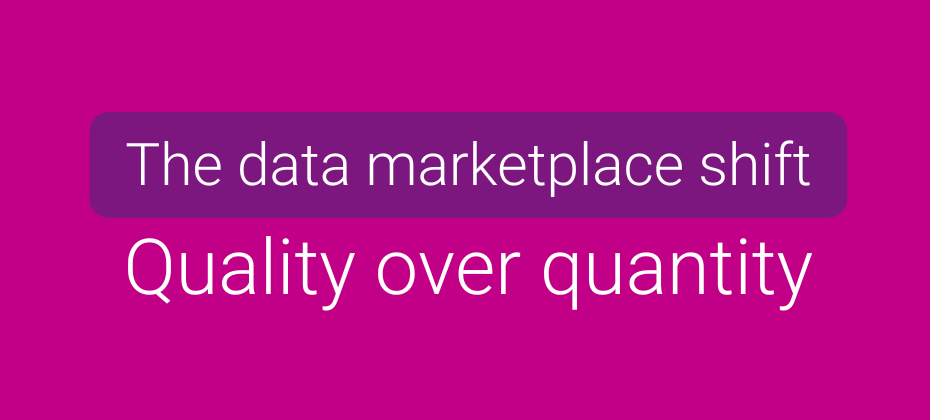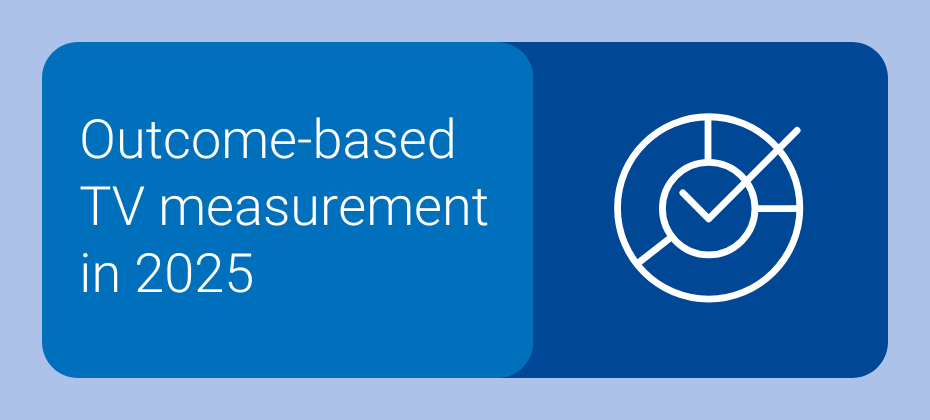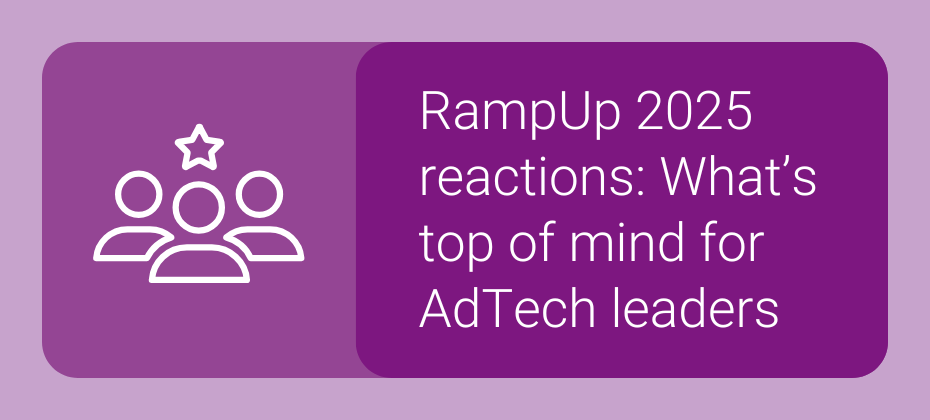Conventional TV advertising campaigns have historically relied on general audience metrics like impressions and ratings to measure outcomes. These metrics can help marketers understand how many people have seen an ad, but they don’t reveal its real-world impact, which leaves a gap between ad exposure and results.
Outcome-based TV measurement bridges this gap and helps marketers tie ad spending directly to their business goals. Instead of counting eyeballs alone, TV measurement zeroes in on what viewers do after seeing an ad — whether signing up for a service, visiting your website, or purchasing a product.
TV ad measurement helps marketers adjust campaigns based on clear, trackable outcomes rather than guesswork. Let’s talk about how marketers can get started with outcome-based TV measurement and start experiencing tangible results.
Why outcome-based TV measurement matters
Outcome-based measurement indicates a massive shift in how marketers evaluate TV advertising success. As a principal analyst at Forrester explained, the industry is about to “move into a whole different world" where multiple metrics are tailored to advertisers’ unique goals, such as sales, store traffic, or web engagement. This shift is driven by improved tools for tracking TV outcomes, which help justify spending and clarify ROI. With TV measurement, you can see how your campaigns impact aspects of your marketing like sales and engagement.
Aligning TV ad spend with business goals
Every business has distinct objectives. Outcome-based measurement ties your marketing efforts to business goals and enables smarter decisions, campaign optimization, and ROI improvements. Whether you're a B2C brand wanting immediate sales or a B2B organization looking to drive website traffic, this method provides the insights needed for strategic decision-making.
Marketers can deliver the most value by adjusting TV ad spending to maximize desired results:
Sales goals: Identify which ads and platforms directly influence purchases to ensure TV ad spend contributes to revenue growth.
Customer engagement: Link actions like website visits or app downloads to TV campaigns and refine messaging to deepen audience connections.
Desired outcomes: Align ad spend with goals like consumer awareness or repeat purchases to allocate resources effectively for measurable success.
Reducing wasted spend on ineffective channels
Outcome-based TV measurement allows you to pinpoint which networks, times, or programs drive the most engagement and conversion. When you know your underperforming channels, you can reallocate budgets to those with a higher ROI and avoid waste.
Core metrics in outcome-based TV measurement
The effective implementation of outcome-based measurement requires advanced TV advertising analytics and tracking metrics that shed light on TV ad performance.
Incremental lift
This metric measures the increase in desired actions and business results — like purchases or site visits — that can be attributed directly to a TV campaign. Incremental lift quantifies your campaign’s impact and separates organic activity from the results your ads have driven.
Let’s say a meal kit service experiences a 20% lift in subscriptions within a single week of running TV ads compared to a week without ads. They’d want to be able to isolate the impact of their ad from their organic growth so they can determine if the growth is actually a result of the TV ads or another effort.
Attribution and conversions
Attribution links TV ad exposure to specific customer actions, such as newsletter sign-ups and product purchases. Conversion data helps marketers understand the whole customer journey to optimize messaging, targeting, and channel mix to improve conversion rates. A retailer that knows 50% of TV ad viewers visit its e-commerce site within 36 hours of exposure could use that information to adjust the timing of its retargeting and align with site visit spikes.
Audience segmentation for targeted measurement
Outcome-based measurement breaks down performance across target demographics and allows for granular audience segmentation so TV ads resonate with the right audiences. For example, if a luxury brand saw better TV ad performance with high-earning Millennials, they’d want to refine their campaign messaging based on this group’s habits and preferences.
Customer journey tracking
Knowing how viewers move from awareness to conversion is critical. Outcome-based TV measurement helps you track the customer journey by pinpointing touchpoints where engagement happens and tying these to your TV campaigns. If a fitness brand found that TV campaigns drive app downloads, it could combine app analytics and TV exposure data to find out when most of their conversions happen after ad exposure and create follow-up messaging for that window of time.
Integrating these insights with other marketing channels allows you to fine-tune your messaging, channel mix, and audience targeting to drive better outcomes and deliver more personalized customer experiences.
Lifetime value (LTV)
Beyond immediate conversions, outcome-based TV ad measurement helps brands identify which TV campaigns attract high-value customers with long-term revenue potential. If a financial institution ran a TV ad campaign centered on its new credit card, for instance, it could use LTV to track new cardholders and determine whether ads occurring during financial news airtime produced customers with higher average annual spend compared to other segments.
How outcome-based TV measurement works
Outcome-based measurement is a data-driven process that involves collecting, analyzing, and applying insights to improve TV ad performance.
1. Collect data
When someone sees your TV ad, they might take action, like downloading your app or buying something. Outcome-based TV measurement begins by tracking these actions and gathering data from various sources, such as:
TV viewership
CRM
Digital engagement
Purchase behavior
Cross-platform interactions
And more
Data integration with digital platforms
Combining TV data with insights from platforms like social media or website analytics creates a more unified view of campaign performance. This integration powers easier retargeting and better alignment between digital and TV advertising strategies. Some marketers enhance this integration further using artificial intelligence (AI) to streamline data coordination and ensure campaigns are optimized for effectiveness and ROI.
2. Connect the dots
Next, marketers need to find out which actions were influenced by TV ads. It’s important to ask questions like these as you work to connect the dots:
Did website traffic spike right after the ad aired?
Did the ad viewers match the people who signed up for the service or made a purchase?
You can link TV exposure to real-world behaviors with tools and identifiers like hashed emails, device IDs, surveys, and privacy-safe data-matching techniques.
3. Analyze the data
Then, the data needs to be analyzed for patterns like these:
Which TV ads or time slots drove the most engagement?
Did certain customer groups respond better than others?
Was there a noticeable lift in sales or signups after the ad campaign?
This step can help you uncover what’s working and what’s not.
Role of advanced analytics and machine learning
The data analysis required in this process can be overwhelming, time-consuming, and risky without the right tools. Fortunately, advanced analytics and fast, effective artificial intelligence tools can process large amounts of data from digital platforms, TV viewership, and customer interactions in less time to reveal accurate, actionable insights and patterns.
They can also predict which audiences, messages, and channels will be most profitable so campaigns can adapt in real time, whether by reallocating spend to higher-performing channels or refining audience targeting.
4. Turn insights into action
Once you have your data-derived insights, you can tweak your campaign in a number of ways, whether you decide to:
Adjust your ads: If one message works better than another, lean into it.
Refine your targeting: Focus on the audience segments most likely to act.
Optimize your spend: Invest in channels or times that deliver the best return.
For example, if you see that ads during prime time lead to more purchases than morning slots, you can shift your budget accordingly.
This type of knowledge can be used to continuously improve your campaigns. Each time you run a new ad, you measure again, building on past insights to make your outcome-based TV advertising even smarter.
Applications of outcome-based TV measurement
Outcome-based TV measurement has wide-ranging applications across industries. Here’s how it’s helping businesses link TV ad exposure to real-world actions and optimize campaigns for better results.
E-commerce and retail: Retailers can track how TV ads influence purchases and use those insights to refine their assets and target specific customer groups. A clothing retailer may track how well a TV ad boosts online traffic and in-store purchases. For instance, if a seasonal sale commercial correlates with a spike in website visits or mobile app downloads, the brand can refine its ad placement to focus on the most responsive demographics.
Automotive: Automakers use outcome-based TV measurement insights to determine how ads drive dealership visits, test drives, or inquiries. A car manufacturer could analyze whether TV spots featuring a new vehicle increase traffic to its dealership locator or car configuration tool online.
Healthcare: Pharmaceutical companies could assess whether TV spots lead to increased prescription fills, or a health provider could test how ads promoting flu shots result in appointment bookings through its website or app. If any messages resonate more with families, the provider can create similar campaigns for the future.
How Experian enhances outcome-based TV measurement
Experian has recently partnered with EDO, an outcomes-based measurement provider, to offer more granular TV measurement across platforms. Our identity resolution and matching capabilities enhance EDO’s IdentitySpine™ solution with rich consumer data, including age, gender, and household income, all in a privacy-centric way. Integrating these demographic attributes is helping advertisers achieve more precise audience insights and connect their first-party data to actionable outcomes.
As a result of this collaboration, brands, agencies, and networks can optimize their TV campaigns by identifying which ads drive the most decisive engagement among specific audience segments. We’re improving accuracy, targeting, and more so advertisers can maximize the performance of their CTV strategies.
Get in touch with Experian’s TV experts
If you’re ready to take your data-driven TV advertising strategies to the next level, connect with our team. We combine advanced data and identity solutions as well as strong industry collaborations to help brands optimize their TV campaigns. Whether you're navigating traditional or advanced TV formats, our expertise ensures your efforts deliver maximum impact.
Connect with us today to drive engagement, connect with audiences, and achieve better ROI. Let’s transform the way you measure success on TV.
Reach out to our TV experts
Contact us
Latest posts













